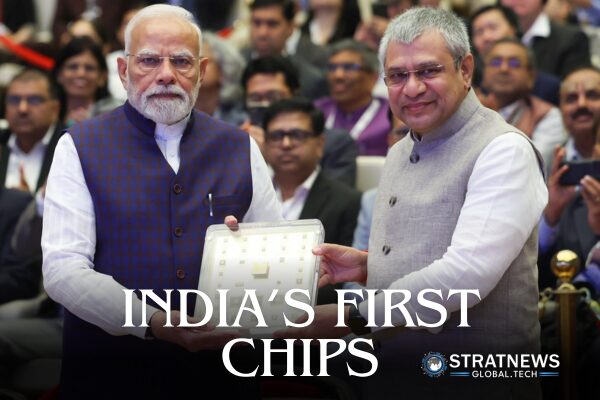PM Modi Receives Made-in-India Chips; Minister Vaishnaw Hails Vision and Progress
India has achieved a historic moment in its semiconductor journey. Prime Minister Shri Narendra Modi was presented with the first set of Made-in-India semiconductor chips by Union Electronics and IT Minister Shri Ashwini Vaishnaw. This marks the transition from approvals to production within just three and a half years since the launch of the India Semiconductor Mission in December 2021.
Minister Vaishnaw described this achievement as a proud moment for the nation, praising the Prime Minister’s foresight, determination, and decisive leadership. He said India’s rapid progress—from a 7.8% GDP growth to a thriving semiconductor ecosystem—positions Bharat as a global beacon of stability.
Strengthening India’s Semiconductor Ecosystem
The India Semiconductor Mission (ISM) is grounded in trust, innovation, and global collaboration. It promotes co-development, respects intellectual property, and supports supply chain development. At SEMICON India 2025, 12 major Memorandums of Understanding (MoUs) were announced. These focus areas include camera modules, microphone buds, miniature packaging, and skill development.
To boost innovation, the Minister announced the Deep Tech Alliance with a $1 billion commitment. Initially centred on semiconductors, this alliance will expand into frontier areas like clean energy, quantum technologies, biotechnology, and space.
Modernisation work at the Semiconductor Laboratory in Mohali is also progressing. ISM 2.0, the upcoming phase, will focus on creating a product-based nation by supporting fabs, OSATs, capital equipment, and materials.
Minister Vaishnaw highlighted that India’s chip exports will play a key role in the ten approved projects. With current production 15–30% more cost-effective than global standards, India is prepared to serve both domestic and international markets.
Growing Talent and Innovation for the Future
India is also nurturing its design and startup ecosystem. At the SEMICON event, 20 chips designed and produced by Indian students were presented to the Prime Minister. With 78 universities using advanced EDA tools, India now contributes nearly 20% of the global semiconductor workforce.
More than 28 domestic startups have already moved from prototype to product. Institutions such as IIT Madras have launched microcontrollers and processors. The Design Linked Incentive (DLI) scheme supports the development of 25 priority products, helping generate valuable intellectual property.
Among the MoUs signed were collaborations involving Tata Electronics, L&T Semiconductor, IIT Gandhinagar, IISc Bangalore, C-DAC, and others. Initiatives include India’s first IoT Evolution Board and projects for secure chipsets, MEMs microphones, and indigenous camera modules.
With its strengths in trust, talent, and technology, and a market projected to reach USD 1 trillion by 2030, India is moving rapidly toward becoming a global semiconductor powerhouse under the leadership of Prime Minister Modi.


